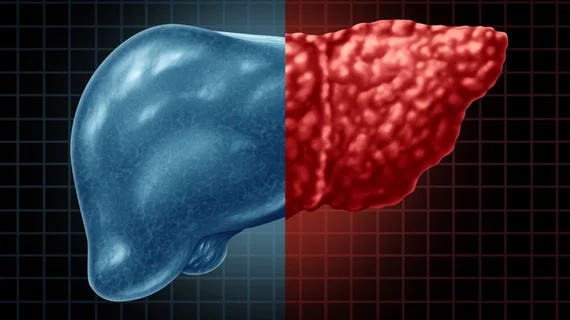Ultrasound is useful for assessing COVID-19 long-haulers, particularly liver problems
Ultrasound imaging can help physicians detect and assess liver injuries in patients recovered from COVID-19, according to new research. And it may be a key tool in understanding long-term symptoms.
In those previously suffering from the novel virus, multiparametric ultrasound uncovered increased markers of liver stiffness and fatty liver disease (steatosis) suggestive of injury compared to healthy participants. Measured up against MRI and CT, mpUS more accurately detected parenchyma involvement, the authors reported in the Journal of Ultrasound in Medicine.
There’s still much unknown about COVID long-haulers, but the researchers believe ultrasound should be involved going forward, particularly for assessing this vital organ.
“Because liver injury in COVID-19 is multifaceted and includes steatosis and inflammation among others, an imaging modality that has the capacity to evaluate all of these [injuries] while also being relatively simple to perform would be preferable in covering all aspects of parenchymal changes,” Maija Radzina, with the Institute of Diagnostic Radiology at Pauls Stradins Clinical University Hospital in Riga, Latvia, and co-authors wrote July 9.
For their study, the group enrolled 90 patients: 56 who had the virus 3-9 months before the investigation and 34 healthy participants. Each underwent liver mpUS, while 76 also received abdominal MRI and noncontrast thoracic CT scans on the same day.
Those with COVID-19, the authors found, had significantly altered elasticity, viscosity, and steatosis values, with “particularly high” fibrosis scores compared to control patients.
Additionally, biochemical markers of liver injury correlated with changes on ultrasound exams but did not extend to findings on CT or MRI.
Three factors proved to be major contributors to liver injury: higher body mass index, hospitalization, and disease severity. The exact link between the reported problems and the novel coronavirus is still hazy, the authors noted, and will require further testing.
“Research on all these factors is just at its beginning, but the presented study strongly suggests that mpUS would be a highly suitable method for such future work, in particular, for the long-term follow-up of patients with prolonged course of the disease,” Radzina and colleagues concluded.
Read the full study here.

